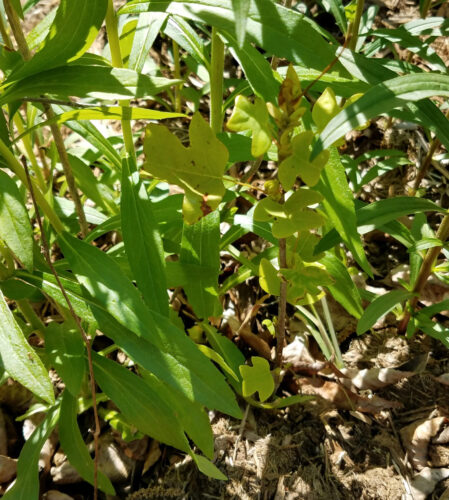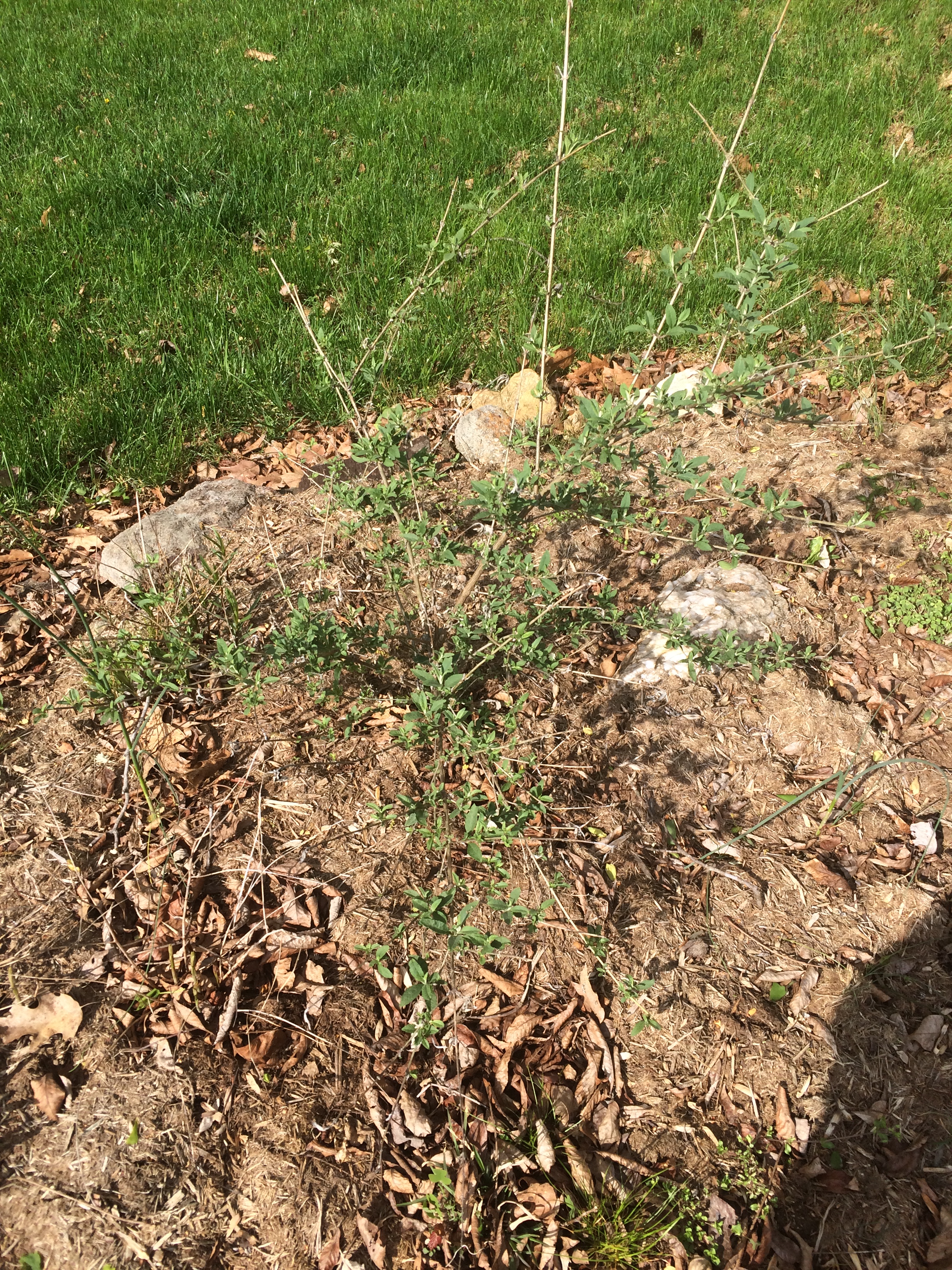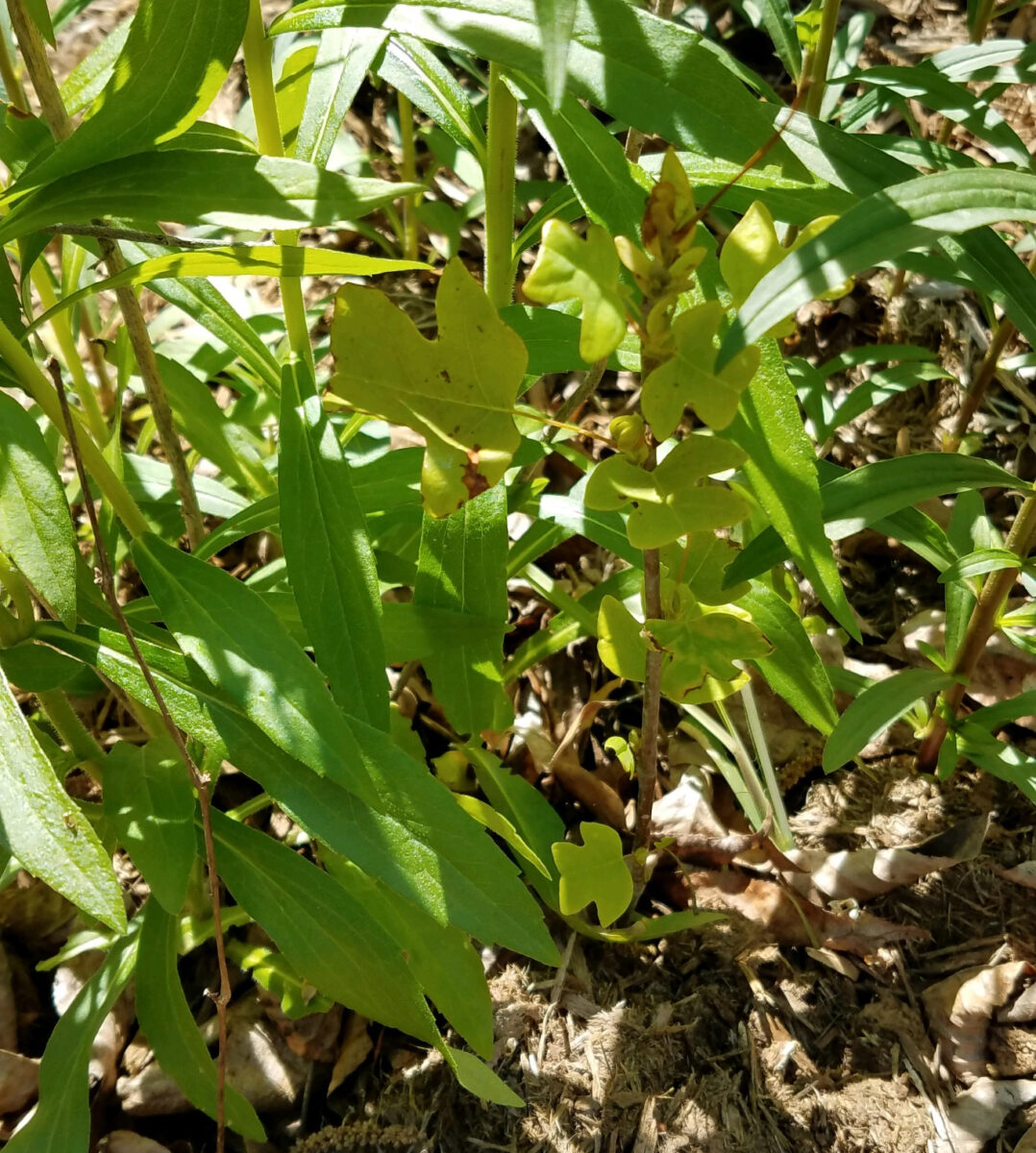Field Notes: When Volunteers Go Bad
May 21, 2020 1:38 pm

by Sarah Parmelee, Area Forester
Last fall, a little seedling popped up in my yard. It was too young to be readily identifiable, so I left it on the off chance that it was something cool. This spring when it leafed out, I realized that it was a butterfly bush.

Butterfly bush.
Now, I do not have any other butterfly bushes in my yard, but other folks in my neighborhood do, and this “volunteer” bush in my yard likely came from seeds spread from a neighbor’s yard. Aside from non-native butterfly bushes, my neighbors also have non-native Japanese barberry, burning bush, and Bradford pear that they care for and maintain as part of their landscaping.
Our choices for landscaping may seem innocent enough, but what we plant in our yards matters to our neighbors and our forests because plants like to spread. Some will spread through roots or rhizomes like mints, irises and tree-of-heaven. Others like sycamore, mulberry or cockleburs will produce seeds that disperse in the wind or will be spread by animals. In a yard with a mowed lawn and weeded flowerbeds, there may be few “volunteers” popping up, but downwind, downstream or along paths taken by wildlife, there may be many.
Why does this matter? Many of the plants that we plant in our yards and gardens are not native to this area (such as the plants in my neighbors’ yard mentioned earlier.) Plant species spend thousands of years developing important relationships within the place where they grow. This includes relationships between plants and pollinating insects, as well as with larger critters such as birds and deer. When we take a plant that has evolved to live in and contribute to its local ecosystem and replace it with a plant that’s native to an ecosystem halfway across the world, we disrupt many of these relationships.
Plants that do not have these developed relationships with the other native fauna are not as easily controlled because they have few natural predators. For example, deer like to eat the growing tips of native hardwood trees like oak seedlings, but they do not like to eat the tips of tree-of-heaven or Japanese barberry (both non-native, invasive species.) Therefore, when the seeds of these non-native plants disperse, there are no plant predators to slow their growth and spread. This contributes to the widespread infestation of private and public forestland with various non-native plants, some of which were first introduced in our landscaped yards. This is detrimental to forest health because these plants do not support important insects (think about pollinators!) and compete with native plants for resources such as sunlight and water.
There’s good news, however: you can help! As the weather warms and we focus on our gardens and landscape plans, I encourage you to take a moment to research what you are planting in your yard. For example, a quick Google search will show that butterfly bush is actually bad for butterflies, and local pollinators would be better served if you plant a spicebush or flowering dogwood. There are many trusted resources available to help folks find native plants that work with their landscaping, such as the Virginia Native Plant Society, which provides regional guides for the whole state.

A volunteer yellow-poplar tree!
If we bring native plants back into our yards and lives, we will be giving a helping hand to the many important insects and other critters that are so important for keeping our forests healthy and beautiful.
Although the butterfly bush was an undesirable discovery, I have also found yellow-poplar, flowering dogwood and sycamores in my garden that have spread there from trees in the neighborhood. Wouldn’t it be cool if instead of spreading harmful plants we could inadvertently spread lots of good ones?
Tags: Invasive Species, Native Species, Wildflowers
Category: Forest Health
